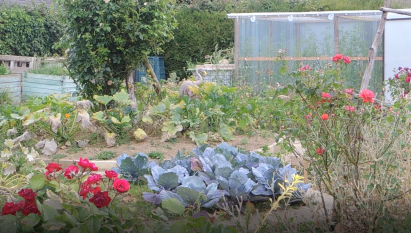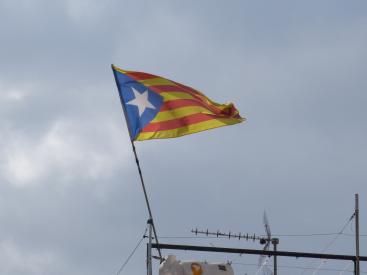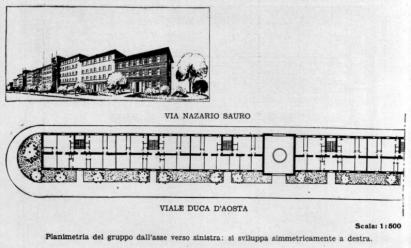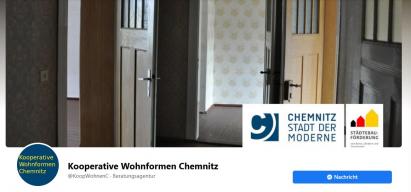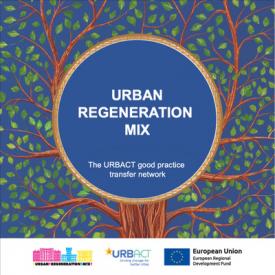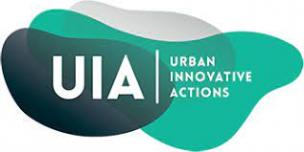-
-
-
-
-
-
-
-
-
USE-IT!
BirminghamUnlocking Social and Economic Innovation Together
Copy linkFacebookXLinkedInEmail1 073 045Summary
<p>Larger capital projects in poor neighbourhoods often do not lead to an improvement in the socio-economic situation of the local population. The USE-IT! project tested an approach that directly links the realisation of larger capital projects - here construction of a new hospital - with the improvement of the socio-economic situation of the population based on the existing local community skills, talents and ideas. </p>
The innovative solution
<p>Despite larger investments, urban regeneration programmes and neighbourhood management the socio-economic situation of those citizens, living in deprived neighbourhoods in Birmingham, could not significantly be improved. Thus, USE-IT! pioneered innovative approaches to inclusive urban development combating poverty in areas of persistent deprivation. The objective was to use physical interventions directly to combat poverty by improving the socio-economic situation of the inhabitants; this was achieved by linking larger, physical interventions with skills and potentials of the inhabitants. The main solutions implemented are: matching people with overseas medical qualifications with job opportunities in the hospital to support employment and better health outcomes in the community, creating a community of social enterprises to support employment and boost social value, as well as developing community research in the local communities to identify and enable better local connections, unlock local skills and insights and link them with opportunities emerging from capital investment.</p>
A collaborative and participative work
<p>Large and diverse partnership of larger public, private and civic organisations working together with local embedded neighbourhood organisations. The partnership was built to complement each other’s specialist skills, knowledge and services, so that no organisation had to reinvent its own work for the purpose of the project and synergies could be achieved. The main target group are the local communities in the ethnically diverse and economically disadvantaged neighbourhoods. The governance/participation structure: Work Packages for each “solution” were set up. Each WP consisted of key partners who collaborated with local community organisations. Each WP was coordinated by WP lead who coordinated activities of their relevant delivery partners. </p>
The impact and results
<p>Due to the large and complex partnership, the communication and information flow between the partners has been a challenge. The Partnership needed time to build trust between the larger and the locally based third sector organisations to enable equitable working relationship. This also demanded a “cultural change” in the larger organisations and a change of the way they worked (change in institutional processes). So far, the main results are 250 migrants with medical skills that are connected with job opportunities in the new hospital, five new consortia of social enterprises, 1 new network of social entrepreneurs, 36 new and 39 established enterprises supported, £240,000 brought into the locality by supporting local organisations to access grants and new contracts, as well as 85 individuals completing ‘Community Research Training’, implementing 24 community research projects and more than £ 300k secured for future work.</p>
Why this Good Practices should be transferred to other cities?
<p>Urban poverty is one of the main topics of the Urban Agenda for the EU. USE-IT! created a unique model of economic development that is inclusive and results in lasting urban regeneration, by raising aspirations, building community resilience, and connecting people to local resources. It draws on and contributes to the theory of community wealth building. <br>USE-IT! has demonstrated that creating the links between micro and macro assets is crucial to effective community wealth building, in effect ‘unlocking’ the potential of these assets. To transfer the USE-IT! approach, relevant partners have to learn to identify these assets and support individuals and groups to build on them to link them to the larger capital infrastructure/ investment projects. This demands an existence of a partnership of organisations responsible for the implementation of the larger capital infrastructure with locally based organisations that work with the local communities. All cities and neighbourhoods contain a range of assets. This include physical assets in the form of buildings and green spaces; financial assets in the form of businesses and investments; the financial assets of public, social and private institutions; community assets in the form of voluntary sector groups and social enterprises; and human assets. </p>
EmailKarolina.Medwecka@birmingham.gov.ukRef nid15988 -
AGRO CITY - MAC
ItalyPozzuoliAgro-Urban Landscape to combat poverty and redevelop the urban environment
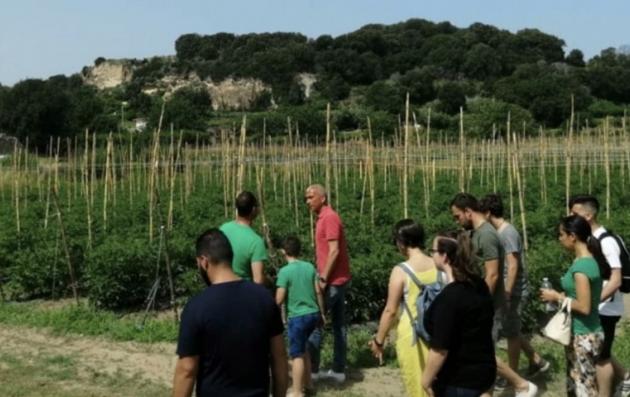
- Climate action
- Social cohesion
Copy linkFacebookXLinkedInEmail81 824Summary
MAC proposes a series of activities with the aim of redeveloping the urban environment and, at the same time, fighting poverty in the Monterusciello district in Pozzuoli, where the current problems of the social context are combined with a difficult urban environment, characterized by isolation, anonymity and decay of public spaces. The overall objective of the MAC project focuses on the residents' poor economic conditions such as low income and unemployment, the lack of business activities, large abandoned green areas and unused public buildings, as well as a lack of quality relationships and trust between citizens and the administration. Through a process of economic, entrepreneurial, and social development, MAC is creating a new Agro-Urban Landscape based on an interconnection of urban areas and agricultural land. About fifty hectares of Municipal owned open areas are transformed into farmland, developed with the innovative techniques of permaculture to spearhead an economic process and urban growth as a means to combat poverty. The project is based on 4 four pillars: the launch of agricultural activities based on the principles of permaculture and organic urban agriculture; the improvement of the urban environment; professional training; encouraging entrepreneurship and employment.
The innovative solution
Urban agriculture is going to offer job opportunities, training, and quality products, while the city will benefit from renewed common spaces and green areas. Along with architectural, urban, landscape and agricultural investments, professional training courses. The MAC project has put in action a strategy coordinated from a new Agro-Urban Center, which will increase the municipality role in the neighbourhood involving the residents in better identifying local issues and solutions. It has transformed thirty hectares of unused areas through the implementation of innovative agriculture while promoting work in the area and developing new skills. The project has also developed the local economy through the Laboratory of Ethical Production and Rural Marketing, trained new innovative business enterprises and supported new start-up companies which will be hosted within the Business Incubator Centre. It developed the Km0 local market through a network with other local producers, hence improving the current open-air week markets. Mac has also acted on the quality of the urban spaces such as architecture interventions and activated spaces within the existing and un-used public buildings for the laboratories and the Agro Urban Centre. Last but not least, it has provided areas for events, a bike path, walkways and seating areas, all to be set along the agriculture areas overlooking the greenery.
A collaborative and participative work
Through the construction of the AGRO URBAN CENTER (AUC) the MAC project installs on the territory, right in the central square of Monterusciello, a space of continuous communication between the municipality, the residents and the key local actors for the identification of local urban problems and the construction of solutions. Participation constitutes a foundation of the present and future actions of the MAC. The principle of local rooting is considered essential for defining co-design processes that lead to the realization of projects accepted by the local community and therefore sustainable. Together with the AUC, the MAC project developed the Consulta Urbana. This is a tool to better structure the process of sharing choices and to give a renewed centrality of the territorial requests within the decision-making processes.
The impact and results
Agriculture, and therefore Urban Agriculture, operated at a considerable scale and organized through professional work and means within an urban context, is an economic activity that can continue to be carried out even in periods where many productive activities must to be stopped, undeniably (e.g. the COVID 19), it becomes crucial for the well-being of the whole community: a key resilient economic activity. The contemporaneity of urban planning must look to a new green deal, in this sense, solutions based on nature, and in their integration with the training and production sectors, together with an innovative and shared conception of public spaces, as promoted within the MAC project, make a difference in the quality of life and in the development opportunities offered to citizens.
Why this Good Practices should be transferred to other cities?
The MAC is a composite project in which the theme of urban agriculture (UA) defines the plot of a regenerative path that includes several components such as the redevelopment and re-functionalization of the public space, the requalification of public lands abandoned for years and their transformation in a productive asset, but also, of an enlarged public space: The community space. It also includes the redefinition of a cultural landscape: a modernist new town that returns to dialogue with those spaces and functions that it had cancelled with its birth in addition to the recreation and reinforcement of a local community disillusioned with public action, which begins to interact with the project, when the first results are seen. Lastly, it consists of the training and creation of job opportunities for many young people from Monterusciello, those most affected by the problem of stagnant unemployment.
Emailass.gerundo@comune.pozzuoli.na.itRef nid15987

